-
Posts
8,544 -
Joined
-
Last visited
-
Days Won
13
Content Type
Profiles
Forums
Blogs
Gallery
Events
Store
Posts posted by TacHel
-
-
It was N-E-V-E-R an albatros! Never ever ever ever...

It's the RCAF, NOT the RCN!
0 -
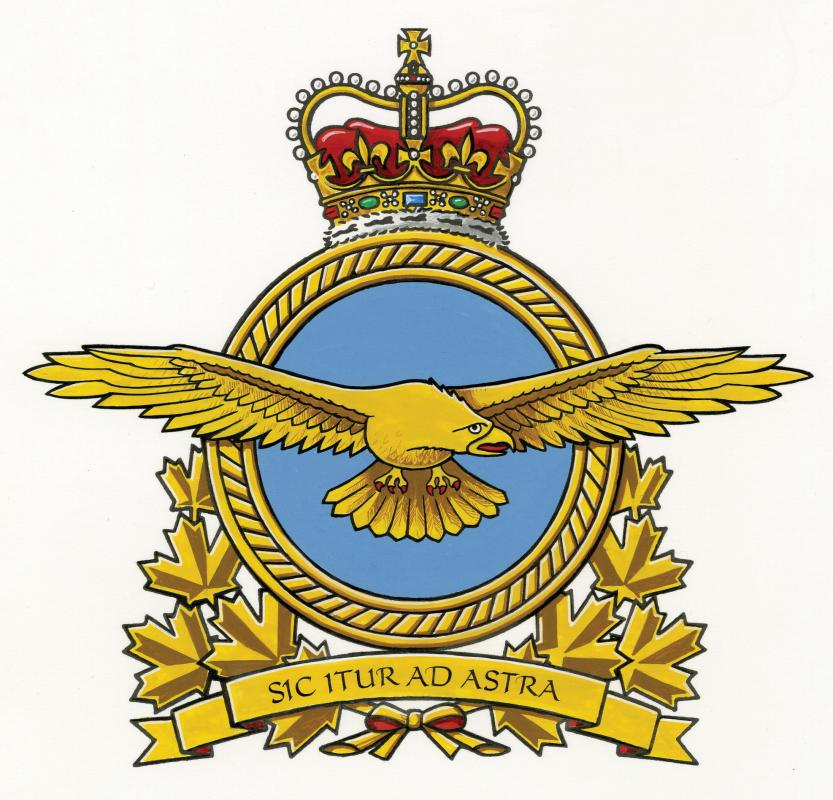
On March 13, 2013, the Governor General of Canada, His Excellency the Right Honourable David Johnston, approved a new badge for the Royal Canadian Air Force. The badge was unveiled in Ottawa on September 15, 2013, following the national ceremony marking the 73rd anniversary of the Battle of Britain.
This change to RCAF insignia came about in the wake of the restoration of the traditional name for Canada’s air force – Royal Canadian Air Force – which occurred on August 16, 2011. The restoration was a return to the name that had been approved for the air force in 1923 by His Majesty King George V and that came into effect on April 1, 1924.
The Royal Canadian Navy, Canadian Army and Royal Canadian Air Force merged into a single service known as the Canadian Armed Forces on February 1, 1968, when the Unification Act came into effect.
In reality, the air force disappeared completely as a separate command entity, as air assets were distributed among other commands. However, in 1975, Air Command was formed and its commander became responsible for all air assets within the Canadian Armed Forces.
The new Royal Canadian Air Force badge hearkens back to the pre-unification RCAF badge. It shows a golden eagle volant – or flying with outstretched wings – on an azure (sky blue) background. The badge combines pride in the past with contemporary spirit; the eagle flying solo reflects the confident, experienced, resilient, agile and integrated RCAF.
This new badge replaces the Air Command badge, which showed an eagle rising from a Canadian astral crown.
The Royal Canadian Air Force retains the Air Command motto Sic Itur Ad Astra – “such is the pathway to the stars”. This motto was first granted to the Canadian Air Force when it was formed in 1920. Sic Itur Ad Astra was replaced by Per Ardua Ad Astra, the motto of the Royal Air Force, when the Royal Canadian Air Force came into being in 1924. Thus, Sic Itur Ad Astra continues to recall the very earliest days of the establishment of a national air force.
0 -
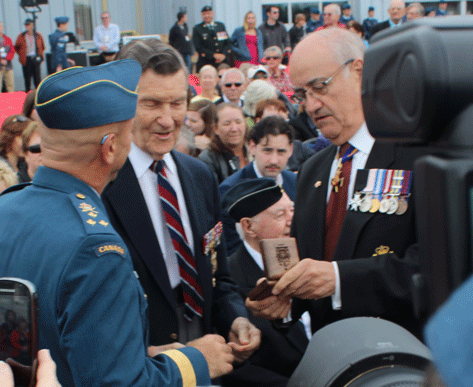
Brigadier-General (Retired) Jack Vincent Watts, DSO, DFC & Bar, receives the bomber command bar to his CVSM from Minister Fantino and the Commander of the RCAF at the Battle of Britain parade 15 September 2013 (photo Dean Black RCAFA).
0 -
Many vets received letters that the minister would personally present the bar to them while on a cross country tour. Below is just such a ceremony.
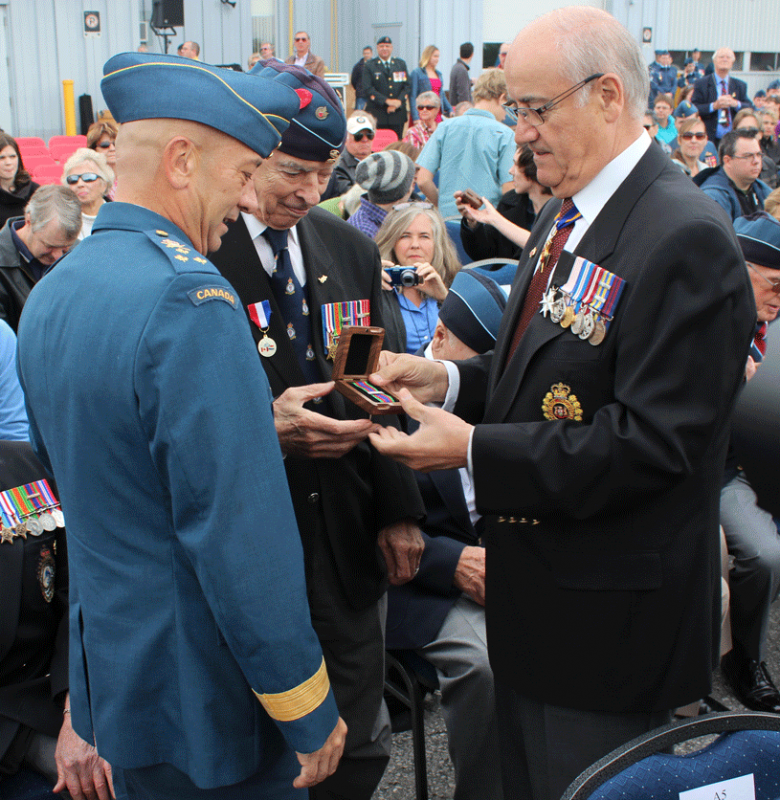
Minister of Veterans' Affairs the Honorable Julian Fantino joins Lieutenant-General Yvan Blondin, Commander RCAF in presenting the Bomber Command Clasp to 425 "Alouette" Squadron RCAF Bomber Command Veteran Francois Savard
0 -
Oh wow!
 This is lining up to be your best work to date!0
This is lining up to be your best work to date!0 -
Currie would be great! Mind you, you could make a Vimy memorial behind him.
0 -
Colin, they all look awesome!

As for the MC ribbon, just center it on the pocket... Either way, judging by your past work, I know it'll look great!
0 -
Sweet!
 Thanks for sharing!0
Thanks for sharing!0 -
There are 2 reasons why the ribbon might be off center like that...
1- The ribbon(s) of the campaign/war medal(s) in which the M.C. was earned aren't worn at this time (for some unexplanable reason) and room is left to affix them after the M.C. ribbon.
2- Simple sloppiness...
If the only ribbon. it is to be centered on the breast pocket.
0 -
1- WOW!
2- Why is the lone ribbon so far right near center?
0 -
Yeah, I've very curious, I've seen a full size one for sale.
0 -
At least the British version is in line with other clasps... Dang... 70 year wait for that...
0 -

That's it? That's the bar? Good Lord! They didn't lose too much sleep coming up with a design did they?
1 -
Still waiting for a group shot of your masterpieces bud!
 0
0 -
Press release from the Canadian Government, Veterans Affairs Canada.
August 26, 2013
Government of Canada Presents First Bomber Command Bars
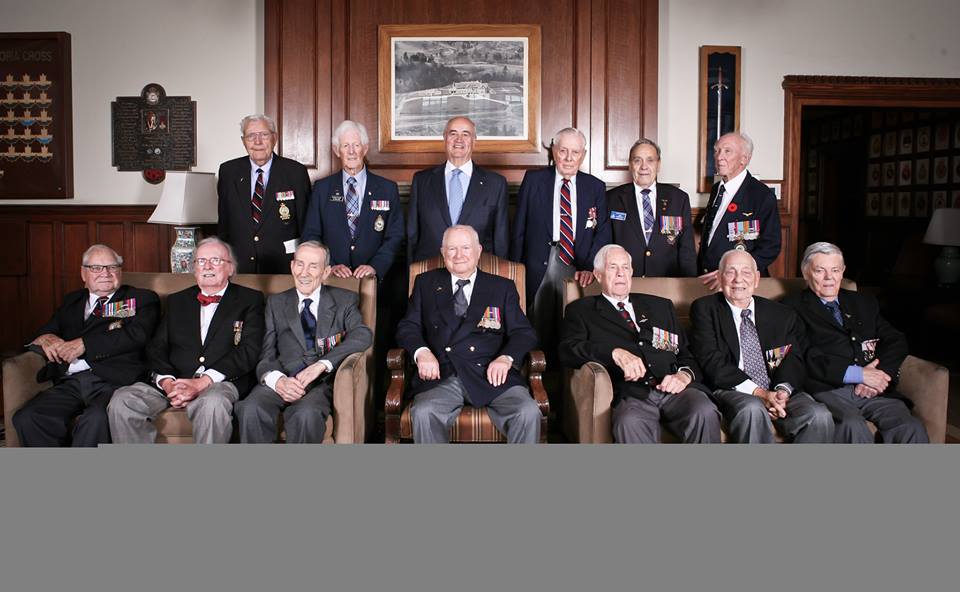
Toronto – The Honourable Julian Fantino, Minister of Veterans Affairs, today made the inaugural presentation of the new Bomber Command Bar to Veterans at a special ceremony held at the Canadian Forces College in Toronto. Veterans of Bomber Command and their families, including those representing deceased Veterans, were in attendance for the ceremony on the grounds of the former Royal Canadian Air Force Staff College.
"Today, our Government is proud to honour Canadians who served in Bomber Command operations during the Second World War by presenting them with the first Bomber Command Bar," said Minister Fantino. "The brave men who served with the Royal Canadian Air Force (RCAF) and the Royal Air Force (RAF) in Bomber Command operations did so at a very heavy cost; approximately 10,000 of them paid the ultimate price, losing their lives in the skies of Europe, in training accidents or in prisoners of war camps. There is no question that their courage and dedication played an important part in bringing victory to the Allies in the Second World War."
"The Bomber Command Bar recognizes Canadian Bomber Command Veterans for their commitment and bravery in facing some of the most difficult odds of the Second World War," said Minister Nicholson. "Despite great risk—almost half of all aircrew never made it to the end of their tour—thousands volunteered. The nation stands forever grateful for their service, and we will always remember and honour their bravery and sacrifice. Lest we forget."
"The Royal Canadian Air Force Association is pleased and delighted that the realization of this significant decoration and recognition is finally at hand," said Colonel (Retired) Terry Chester, National President of the Royal Canadian Air Force Association. "Our loyal and brave airmen have waited patiently for this moment; many, sadly, are not now here for this auspicious moment, but we will remember them as we honour those who continue to carry the torch. Per ardua ad astra!"
Canada played a vital role in the British Commonwealth Air Training Plan (BCATP), a wide-reaching plan that was jointly undertaken by Great Britain, Canada, Australia and New Zealand, whose graduates formed the backbone of Bomber Command. Many of the Canadians who trained under this program served with RCAF squadrons in the No. 6 Bomber Group—the only non-British group to serve in Bomber Command. By the end of the Second World War, No. 6 Bomber Group had carried out more than 40,000 sorties and approximately 8,000 decorations for bravery were awarded to its members. The Government of Canada created this official honour to formally recognize these brave Canadians.
In addition to the creation of the Bomber Command Bar, the Government of Canada also helped in creating the new Bomber Command Memorial in London, United Kingdom. This memorial honours all members of the Bomber Command from Allied countries and those who made the ultimate sacrifice.
For more information on Canada’s role in Bomber Command and the Bomber Command Bar, to apply online for the honour or to download a hardcopy of the application form, please visit veterans.gc.ca.
2013 is the Year of the Korean War Veteran—Canada proudly remembers the heroes of the Korean War and their brave fight to defend the Republic of Korea and uphold freedom, democracy and the rule of law. For more information on Canada’s role in the Korean War, visit veterans.gc.ca.
1 -
Wow! Really looks like him! You managed to capture that smug little face perfectly! Well done!
0 -
The Star
Wednesday, August 28, 2013
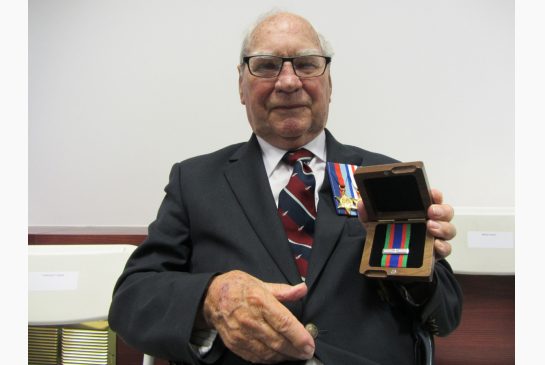
Henry James Hewett of Oshawa shows off the bomber command bar he received Monday, an honour finally bestowed nearly 70 years after the war.
Henry James Hewett remembers quite clearly one of the scariest moments he ever experienced as a navigator with the Royal Canadian Air Force during the Second World War.
During a routine trip, his plane was struggling to maintain height after one of its four engines malfunctioned. The team had to abort its mission but somehow get rid of the load of bombs before trying to land.It’s “pretty tricky” to land a plane carrying a full bomb load, Hewett said, but no matter what the crew tried, they couldn’t get it to unload.“We couldn’t shake it, couldn’t lose it, we couldn’t get rid of that bomb load at all,” he said. And, despite being instructed to bail out, the team decided to stay with their pilot, who was adamant about not abandoning his plane, and attempt a landing.“He was a pretty good pilot, he was, but he landed a Lancaster (plane) with a full bomb load on just three engines . . . that was scary,” Hewett said, chuckling at the memory seven decades later.On Monday, the Oshawa resident and 13 other GTA veterans became the first bombers to be recognized belatedly for the work they did in similarly sticky situations — and the sacrifices they made. Of about 50,000 Canadians who served in bomber crews during the war, nearly 11,000 died.The handful of veterans was the first to be presented with new Bomber Command Bar, to be worn on the Canadian Volunteer Service Medal awarded to those who served 18 months during the Second World War, during a ceremony at the Canadian Forces College in Toronto.Minister of Veterans Affairs Julian Fantino personally thanked each veteran and said still more veterans, or their surviving family members, are coming forward to claim the bar.“These commemorative ceremonies will be taking place right across the country, as quickly as we can process them,” Fantino said.The bar was announced over a year ago, around the same time as a memorial for the bomber command was unveiled in England. The bombers were long unrecognized because of the nature of their mission, which grew controversial after the war was won.Although bombing was instrumental in ending the war, the heavy toll of civilian casualties near the end, particularly of Dresden, created discomfort in the upper ranks.Hewett sat for a while after the ceremony, just watching fellow veterans celebrate. “I feel gratified,” he said. “I mean, we’re not glory hunters, we don’t want to be praised all that much. We just want to be appreciated.”1 -
-
There is a medal from a Russian museum rewarding work in phaleristics... Let me find it for you...
0 -
Wow! Awesome pics!
 0
0 -
 I don't get it...
I don't get it...This is getting a bit ridiculous...

To reward civilians for their support and help, OK... But ground soldiers already had many awards that could and still can fulfill these criteria... No?
Thanks for the heads up bud! That one definitely slipped by me...
0 -
My guess would be a phys ed / gymnastics award...
But I'm sure more knowledgeable members will ID it more precisely for you.
0 -
Found him! (Phone book)
He lives on the same street as my in-laws in Lachine!
 Definitely going to try to contact him for a chat and maybe pics...0
Definitely going to try to contact him for a chat and maybe pics...0 -
Xlation:
Top pic, circular inscription: FIRST COURSE OF THE FONDATION OF THE SCHOOL (It's also gramatically incorrect in French)
Center inscription: ADDITIONAL PRIZE AWARDED TO SERGEANT GOY ETIENNE ADOLPHE
Center pic, circular inscription: NORMAL GYMNASTICS SCHOOL
Center inscription: AWARDING OF PRIZES and the date
Rim inscription: 8TH PRIZE OF THIS KIND AWARDED BY MISTER NAPOLÉON LAISNÉ
0


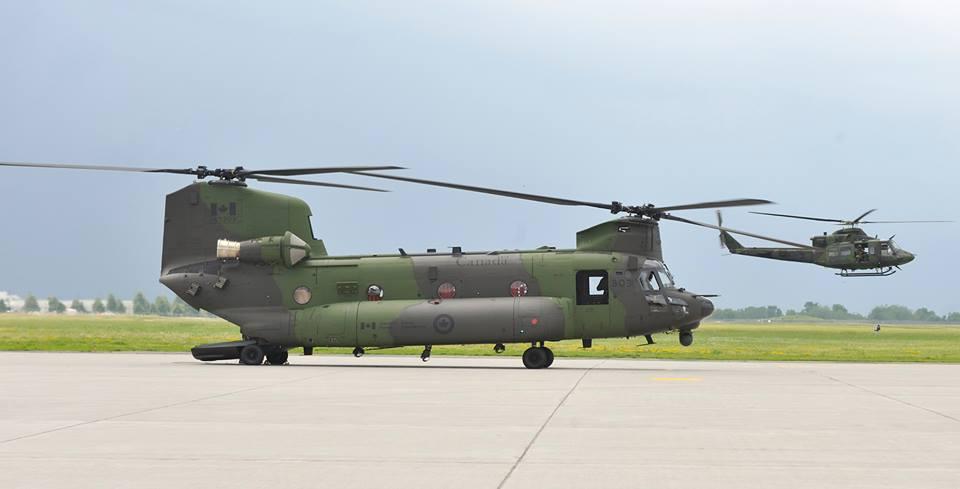

The New Royal Canadian Air Force Badge
in Commonwealth Realms: Canada, New Zealand & Australia Medals & Militaria
Posted
EAGLE
ALBATROS
'NUF SAID...